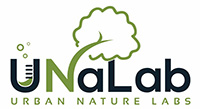 |
Inspiration Card
Governance Actions |
|
Finance & Procurement
|

|
G19 Include Total Economic Value (TEV) Framework in Cost Benefit Analysis (CBA)
| Knowledge & Awarness | Political Commitment | Organisation | Perceived Costs & Benefits | Social & Environmental Justice |
| ✔ | ✔ |
As many goods provided by NBS are intangible, incorporating them into a traditional CBA is difficult. One way to address the problem could be to adopt a TEV framework, which is designed to account for intangible benefits delivered through the ecosystem services. It accounts for the use and non-use values of an environmental good or service. Adopting a holistic CBA would imply that not only the fiscal aspects of a project are taken into consideration, but also the project’s effect on the social welfare.
- Linking CBA to the ecosystem services
- Identifying the potential goods delivered by the selected ecosystem services (including the use and non-use values)
- Selecting appropriate valuation methods for the environmental goods and services delivered by NBS.
- Promoting cooperation with research institutions to carry out the valuation research
Example:
Singapore is starting a new project aimed at conducting the first national assessment that would quantify the benefits of the environment and account for its natural capital. The project is funded through National Research Foundation and will be implemented as a collaborative research project between Singapore-ETH Centre, Principal Investigators from the National University of Singapore (NUS), Nanyang Technological University (NTU), SEC, and ETH Zurich, with collaborators from the key partners in government including the Centre for Urban Greenery and Ecology (CUGE) at the National Parks Board (NParks) (Natural Capital Singapore, n.d.). The project aims to quantify the benefits delivered by the numerous surrounding ecosystems by using the stated preferences methodology, as well as the replacement cost for the different types of the natural capital approach (En, 2018). Since Singapore is small and densely populated, urban development and planning has substantial potential to deplete local natural capital. The project team plans to develop an interactive digital planning tool that would illustrate the data on the ecosystem services and their benefits as well as economic and socio-cultural value of urban green spaces. This tool is expected to inform the local policy makers on the possible impacts of the urban development plans in Singapore (En 2018). Natural Capital Singapore http://www.naturalcapital.sg/
